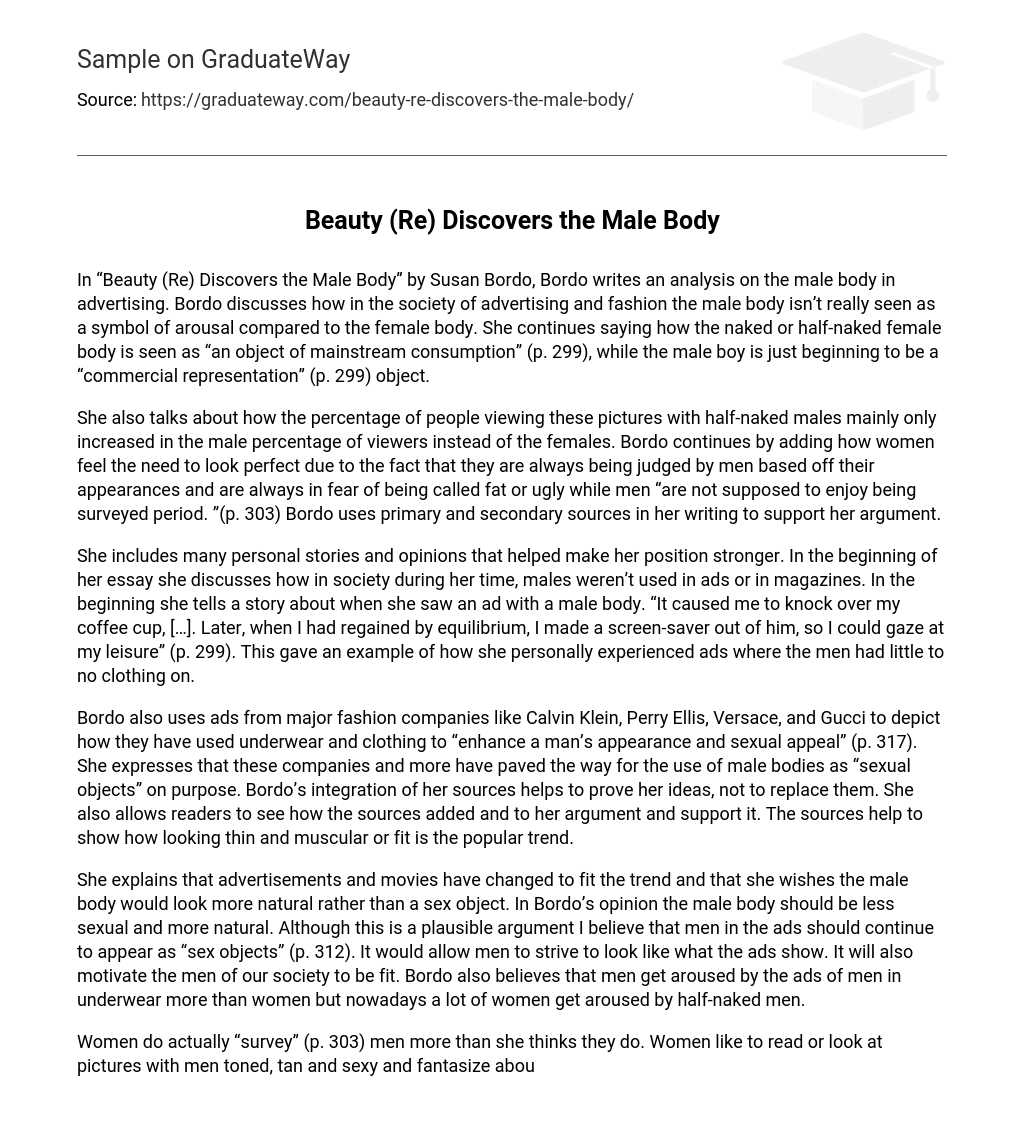In “Beauty (Re) Discovers the Male Body” by Susan Bordo, Bordo writes an analysis on the male body in advertising. Bordo discusses how in the society of advertising and fashion the male body isn’t really seen as a symbol of arousal compared to the female body. She continues saying how the naked or half-naked female body is seen as “an object of mainstream consumption” (p. 299), while the male boy is just beginning to be a “commercial representation” (p. 299) object.
She also talks about how the percentage of people viewing these pictures with half-naked males mainly only increased in the male percentage of viewers instead of the females. Bordo continues by adding how women feel the need to look perfect due to the fact that they are always being judged by men based off their appearances and are always in fear of being called fat or ugly while men “are not supposed to enjoy being surveyed period. ”(p. 303) Bordo uses primary and secondary sources in her writing to support her argument.
She includes many personal stories and opinions that helped make her position stronger. In the beginning of her essay she discusses how in society during her time, males weren’t used in ads or in magazines. In the beginning she tells a story about when she saw an ad with a male body. “It caused me to knock over my coffee cup, […]. Later, when I had regained by equilibrium, I made a screen-saver out of him, so I could gaze at my leisure” (p. 299). This gave an example of how she personally experienced ads where the men had little to no clothing on.
Bordo also uses ads from major fashion companies like Calvin Klein, Perry Ellis, Versace, and Gucci to depict how they have used underwear and clothing to “enhance a man’s appearance and sexual appeal” (p. 317). She expresses that these companies and more have paved the way for the use of male bodies as “sexual objects” on purpose. Bordo’s integration of her sources helps to prove her ideas, not to replace them. She also allows readers to see how the sources added and to her argument and support it. The sources help to show how looking thin and muscular or fit is the popular trend.
She explains that advertisements and movies have changed to fit the trend and that she wishes the male body would look more natural rather than a sex object. In Bordo’s opinion the male body should be less sexual and more natural. Although this is a plausible argument I believe that men in the ads should continue to appear as “sex objects” (p. 312). It would allow men to strive to look like what the ads show. It will also motivate the men of our society to be fit. Bordo also believes that men get aroused by the ads of men in underwear more than women but nowadays a lot of women get aroused by half-naked men.
Women do actually “survey” (p. 303) men more than she thinks they do. Women like to read or look at pictures with men toned, tan and sexy and fantasize about them. Bordo uses primary and secondary sources from multiple companies to prove her argument that men rather than be seen as sexy macho men they rather be seen for how the really look. She also touches upon how society has changed in media fashion and advertisement concerning the male body from just females just being the only ones in ads to male and females and how it affects females in society now.





